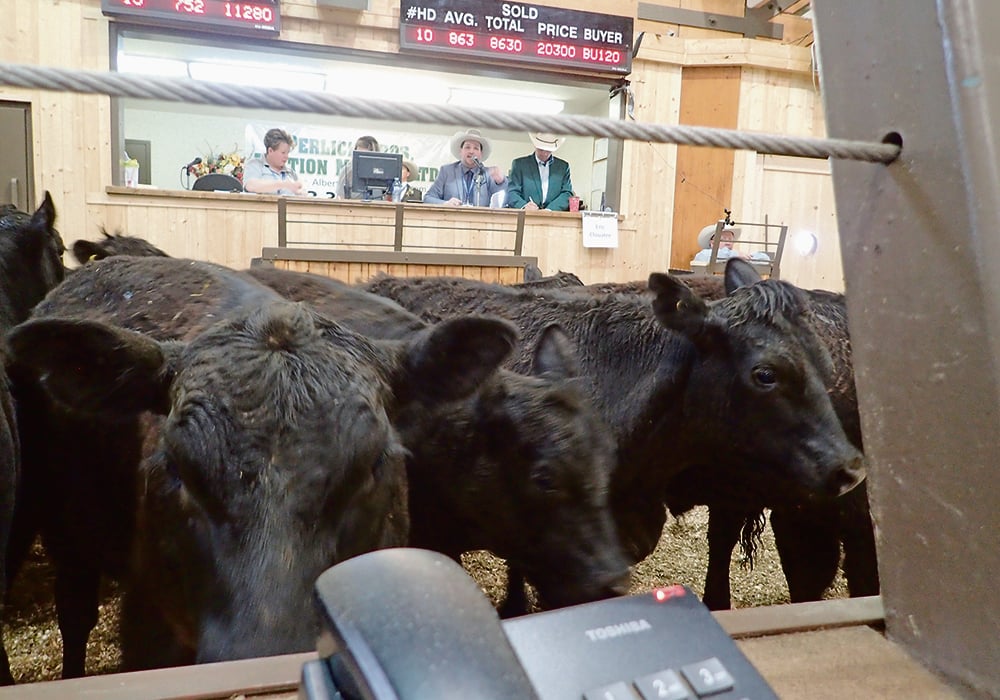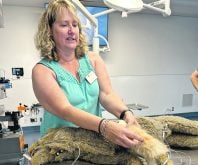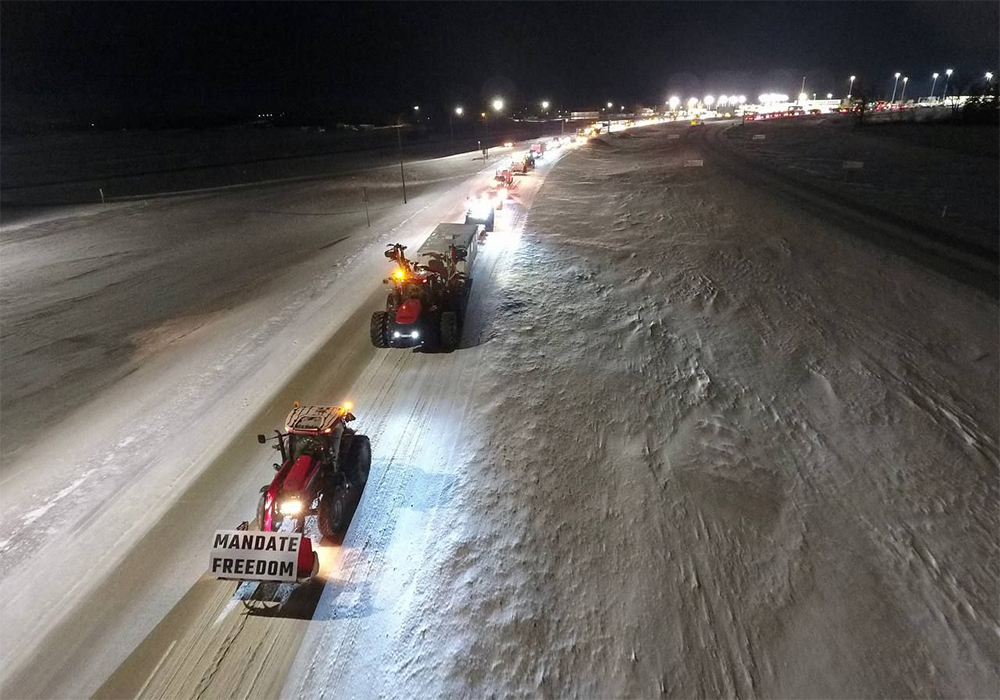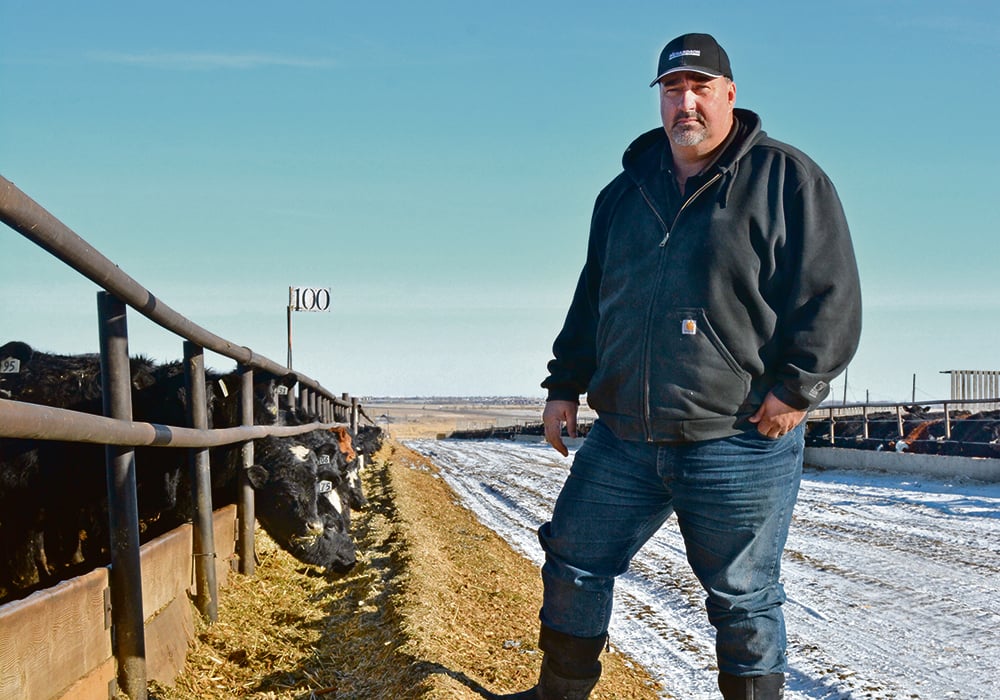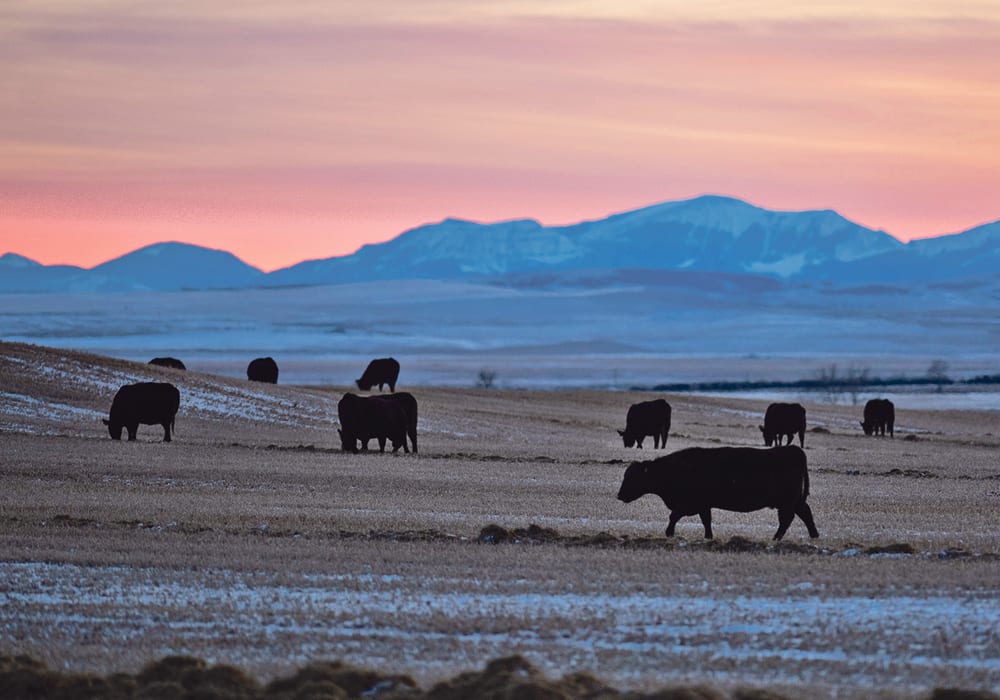Markets say cattle sales continue despite physical distancing measures and a slight drop in sales volume
It’s a surreal sight for auctioneer Rob Bergevin as he takes bids for cattle at Foothills Auctioneers in Stavely, Alta.
He looks out at the tiered wooden stands that hold a maximum of 15 people, each sitting far apart. The public health restrictions on crowds and distancing make it so, but it’s a far cry from the array of people he’s more used to seeing during sales.
Bids come in from those gathered, as well as from telephone and online buyers, so the sales are carrying on during a pandemic.
Read Also

Beef check-off collection system aligns across the country
A single and aligned check-off collection system based on where producers live makes the system equal said Chad Ross, Saskatchewan Cattle Association chair.
“Even though we’re in these uncertain and unprecedented times, the market is surprisingly holding itself together reasonably well. There were some peaks and valleys but at the moment it’s holding together OK,” he said of his auction business.
As for animals moving through, “the numbers are, I would say, down a hair. I wouldn’t say down a substantial amount but they are down a little bit.”
He’s among the lucky ones because Canada-wide, auction receipts are have fallen 30 to 40 percent over the past three weeks, depending on location.
Rick Wright, executive administrator of the Livestock Markets Association of Canada, said last week that deliveries to markets are down slightly compared to last year and are expected to sink lower in coming weeks.
Anxiety among sellers is high given worries over slowed packing plant activity, feedlots having to hold back cattle, backgrounders pondering next moves and cow-calf producers hoping the backlog is addressed before the fall calf run.
“The anxiety and the frustration levels in the cattle community is the highest that I’ve seen since BSE and maybe the highest that I’ve seen in the 40 years that I’ve been in the business,” said Wright.
“We’ve almost become guidance counsellors to our customers.”
Lee Crowley at Heartland Livestock Services in Swift Current, Sask., concurs. His customers, many of whom are booking fall sales, ask him for advice but answers are hard to come by given the unique situation.
“A lot of our customers are planning for fall already but the big concern is … is there going to be room for their calves in the fall?” said Crowley.
With the grass greening up across the Prairies, there are a few options being reflected in the sales ring.
“We’ve seen pretty strong demand for the younger cows to go back into the breeding programs and some of the greener feeder style cows to go back on feed, so that’s taken some out of the kill numbers and that’s helped maintain the price,” said Wright.
Group size restrictions and social distancing have hampered sales of cow-calf pairs at some locations, he added. Buyers of pairs in particular like to see the animals in the flesh and that isn’t always possible.
“Selling those cow-calf pairs on the video lines like they do for the bull sales is quite difficult because they’re usually sold in packages. Guys like to buy their own cow-calf pairs and in most cases, they like to get a really good look at them in the ring, so we’ve seen very few pairs trading publicly in Western Canada in the past week,” Wright said in early May.
As for feeders, some producers are refusing to sell at current discounted rates so they are holding cattle back in hopes packers will increase production and quickly address the fat cattle backlog.
“The perception coming from a lot of the producers out in the country is that with the fed cattle being backed up there’s limited room for the feedlots to acquire and bring in fresh inventory and that’s one of the reasons that the market is so under pressure.”
The plight of feedlots is recognized and felt in the Lethbridge area, colloquially known as feedlot alley. The region has the highest concentration of feedlots in the country.
“There’s varying levels of concern, just because, when you’ve got feedlots that have cash-flow issues and given that the packer is their end market, they are the ones that are most affected by the closures,” said Ken Perlich of Perlich Bros. Auction Market in Lethbridge.
“Is there concern out there? Absolutely. And people would be wrong, I think, not to be concerned, but they also have to put their best opportunity forward … and not get too wrapped up in the negative.”
He too finds it an odd sight to see only 15 people in the auction barn but as an essential service, the sales continue and there is more action online. Despite the physical restrictions, Perlich said prices for bred cattle, replacement heifers and pairs have been steady.
He keeps an optimistic outlook, which seems to be an auctioneer trademark.
“If BSE taught us anything, it’s that the people in this industry across agriculture are resilient people and I think they’re going to show that kind of resiliency again,” said Perlich.
Added Bergevin: “We’re a pretty adaptable bunch so we’ve got to do what we’ve got to do.”




